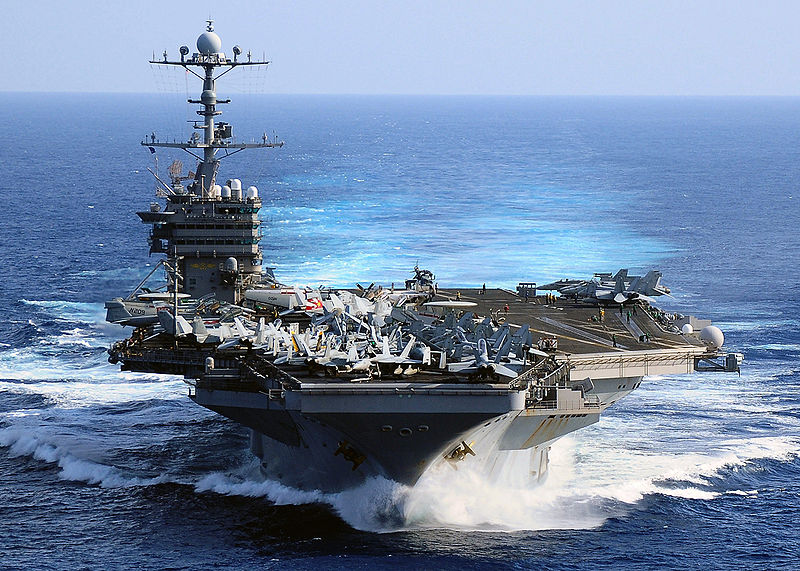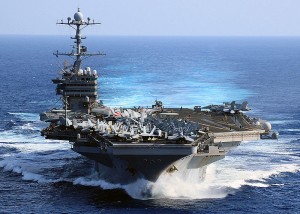
Limitations of Hard Power in the Pacific
 Earlier this year, the Obama administration outlined a strategy for military rebalancing in Asia in order to provide a strategic military presence and enhanced cooperation with regional allies. The Pentagon has begun to shift naval forces to the Pacific and has provided reassurances in order to strengthen an implicit notion of collective security. In June, Leon Panetta visited regional partners to demonstrate the Pentagon’s commitment, and asserted the importance of regional agreements pertaining to areas of increased tension such as the South China Sea.
Earlier this year, the Obama administration outlined a strategy for military rebalancing in Asia in order to provide a strategic military presence and enhanced cooperation with regional allies. The Pentagon has begun to shift naval forces to the Pacific and has provided reassurances in order to strengthen an implicit notion of collective security. In June, Leon Panetta visited regional partners to demonstrate the Pentagon’s commitment, and asserted the importance of regional agreements pertaining to areas of increased tension such as the South China Sea.
The administration’s Asia pivot was conceived as a hedge against a rapidly developing Chinese military and to strengthen security commitments with regional allies who have seen escalating tensions with China. The rebalancing justification hinges upon the notion of an increasing likelihood of military conflict in the Pacific, and that Washington has ignored commitments to regional partners for too long. Deputy Secretary for Defense, Ashton B. Carter, explained the military rebalancing from a historical perspective and that security in Asia was “reinforced by the pivotal military power of the United States in that region.”
Will Military Rebalancing be Effective?
The military rebalance in Asia, however, is not only a geopolitical strategic maneuver, but is also a foreign policy choice which provides a justification for a new military concept: Air-Sea Battle. In February of 2010, the Pentagon released its Quadrennial Defense Review which outlined the Navy and Air Force’s desire for enhanced military cooperation known as Air-Sea Battle. Air-Sea Battle is a rather ambiguous operational concept which provides enhanced cooperation for cross-domain operations. Cross-domain operations essentially involve coordination among military departments in different “domains” such as air, land, sea, and cyberspace to achieve a favorable operational outcome.
The Air-Sea Battle conceptual framework is justified as a means to challenge the growth of anti-access and area-denial strategies which are allegedly being employed by China in the Pacific. Anti-access threats involve the exclusion of the U.S. from a particular region by reducing political and economic influence or even logistical capabilities in a particular region. Area-denial methods are lethal tools which may physically prevent the enemy from entering a particular territory and will inflict operational difficulties in achieving objectives. CSIS has provided a comprehensive analysis of anti-access/area-denial strategies.
The difficulties in the South China Sea are indicative of this struggle as China has asserted the South China Sea to be a national interest and has demanded that the United States stay out of the issue: clearly asserting greater influence and desiring less political and economic presence by the United States (anti-access).
The Air-Sea Battle concept is designed as a military strategy to provide security against an assertive Chinese government which clearly wishes to limit U.S. intervention on this critical issue. Air-Sea Battle’s cross domain approach is supposed to confront the anti-access/area-denial methods of any enemy, but has clearly found its strategic rationale as the administration shifts focus to Asia.
While the Air-Sea Battle operational concept is logical for conventional military operations, it should not be viewed as the primary leverage of the United States in the Pacific. The United States desires stability, diplomacy, economic integration, and cooperation with Asian countries. It is unlikely that only a military strategy on cooperation issues will create a desired outcome with China. The doctrine still remains to be a conventional military approach to a foreign policy dilemma in Asia that is multi-faceted. Deploying military force could involve the United States in various contingencies and may only embolden China’s rivals such as Vietnam in the South China Sea.
Alternative Approaches: Engagement Through International Norms
In a time of fiscal uncertainty for the Defense Department, the United States must utilize all other forms of instruments to achieve favorable outcomes in Asia. Diplomatic initiatives which include China in the international system will be critical.
An important step will be for the United States to ratify the Law of the Sea which provides international rules and laws governing the use of oceans and maritime resources. This would provide the U.S. with an international legal framework to influence China through inclusion and demand their cooperation on issues such as the South China Sea. The Obama administration has already taken note of the advantages in the treaty for Chinese relations.
The inclusion of China into the WTO, for example, was an effective way for the United States to positively engage China and incorporate them into the international community on issues of trade. The Law of the Sea has similar potential and will be an important diplomatic and legal framework.
While the military rebalance and development of an Air-Sea Battle Concept are significant for the military pivot towards Asia, it is critical that the United States utilizes international agreements as legal justifications for influence, stability, and to gain greater cooperation from China on issues.
The United States must recognize the projections of military power in the current fiscal climate may not be viable as long-term strategy. Binding nations to international agreements will be important in achieving cooperation and legitimacy for those nations who wish to curb Chinese influence in the Pacific.





